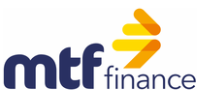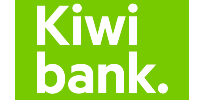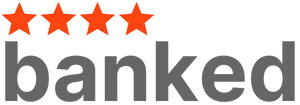Compare business loans
Our guide helps you choose the best loan for your business and circumstances.

The breakdown
- There are different types of business loans and loan structures — it’s important to choose a finance option that’s right for your business’s needs.
- Having a clear understanding of your business’s finances will set you up to find the best loan and it will help you at the application stage.
- For larger business loans, it’s helpful to prepare for your loan application well in advance.
Author: Kevin McHugh, Head of Publishing at Banked.
Compare business loans for the best deal
Rates and fees reviewed and updated: 27 October 2025.
| Lender | Interest rate (p.a.) | Loan types | Terms | Loan amount | Learn more |
|---|---|---|---|---|---|
 MTF Finance
MTF Finance
|
9.90% to 23.25% | Secured and unsecured | 3 months to 5 years | $2,000 to $500,000 | |
 Prospa
Prospa
|
Varies | Secured and unsecured | Up to 3 years | $5,000 to $500,000 | |
 Harmoney
Harmoney
|
7.99% to 24.99% | Unsecured loans | 3, 5, or 7 years | $2,000 to $100,000 | Harmoney review |
 ANZ
ANZ
|
Varies | Unsecured | 6 months to 5 years | Varies | |
 Kiwibank
Kiwibank
|
Varies | Secured | 1 to 5 years | Varies |
Types of business loan available in NZ
There are several loan types available to NZ businesses. We examine each and look at when each is most suitable.
Secured business loan
A secured business loan is a type of finance for which you must provide collateral to secure the loan. This collateral could be a vehicle, equipment, or property. With asset or equipment finance, the loan is usually secured against the business asset you’re buying.
If you’re looking specifically for commercial vehicle finance, check our business vehicle finance guide.
If you can’t repay a secured business loan, the lender has the right to sell the asset that was used to secure the loan in order to pay off the debt.
Because they involve less risk for the lender, they can offer secured loans at lower interest rates. Ultimately, this means you will pay less to borrow the money you need.
Common uses for secured business loans include:
- investing in new business equipment
- buying a new company vehicle/s
- investing in new business premises (usually known as a commercial loan).
Unsecured business loan
An unsecured business loan is not secured against anything. This means that if you’re not able to repay the loan, you don’t have a particular asset that the lender can claim and sell to pay off your debt.
Unsecured business loans involve more risk for lenders for this reason. As a result, they involve higher interest rates than secured loans.
However, if you don’t have (or don’t want to use) available collateral to secure a loan, an unsecured business loan may be the funding option your business needs.
Common uses for unsecured business loans include:
- purchasing new materials or stock
- renovating business premises
- hiring new staff.
Fixed-rate business loan
With a fixed-rate business loan, the rate of interest will be locked in throughout the term of the loan. The benefit of this type of loan is that you know exactly how much your repayments will be from start to finish and you can budget to suit.
The interest rate the lender offers you will depend on factors like whether the loan is secured or unsecured and the financial circumstances of your business.
If you have a fixed-rate loan and want to repay the total outstanding amount early – or you want to switch to a floating-rate loan – a fixed-rate break fee may apply.
Floating-rate business loan
Also known as a variable-rate loan, a floating-rate loan does not have a set interest for the entire loan term. Instead, the interest rate will go up or down in line with the market.
This can make it harder to plan your finances and you may end up paying more interest over the course of the loan, depending on interest-rate fluctuations. But there are a number of advantages of a floating interest rate.
With a floating interest-rate loan you have great flexibility in repayments. You don’t have to stick to a rigid repayment schedule and you can pay off more when you have available funds. This can be beneficial if you don’t have a predictable income.
You can also choose to switch all (or just part) of your outstanding loan balance to a fixed rate when you want without paying a break fee.
How to choose the right business loan structure
Getting a good understanding of the available finance options out there is an important step in getting the best loan for your business.
Here we look at the loan structures available to NZ businesses and explain how they’re suitable for different needs and circumstances.
Table loan
With a table loan, you will have a set loan period and make regular payments until you reach the end of the term, by which point the loan will be completely paid off.
If you choose a fixed-rate table loan, the amount you repay will be the same with each instalment. With a floating-rate table loan, the exact amount you pay with each instalment can vary, depending on the interest rate at the time.
At the start of your table loan, your repayments will mostly go to paying down interest. But as the loan term goes on, you will pay more and more of the principal (the original amount you borrowed).
Pros and cons of a business table loan
Pros
- You’ll know exactly when your loan will end and when you need to make repayments.
- If you have a fixed-rate table loan, you’ll also know exactly how much each repayment will be.
Cons
- If you don’t have a regular, predictable income, making the same regular payments might be challenging.
Reducing loan
A reducing loan is sometimes referred to as a reducing-balance loan or a straight-line loan.
Unlike a table loan, you will pay off the same amount of the principal with each payment, with interest charged on the total amount outstanding at that time.
This means that as you pay down more of the loan, the amount you pay in interest will decrease. As a result, your repayments will be higher at the start of the term and get lower as the term goes on (hence the name ‘reducing’ loan).
Pros and cons of a reducing loan
Pros
- You will pay less in interest over the term of the loan when compared to a table loan.
- As payments decrease over time, a reducing loan might be suitable if you expect to have less funds available than you do at the start of the term.
Cons
- Repayments will be higher at the start of the term so it might be the wrong choice if you have less money available for repayments in the medium term.
Revolving credit loan
Also known as a line of credit, a revolving credit loan is a lot like a bank overdraft. The lender makes an amount available and you can draw as much as you need when you need it.
Unlike a table loan or a reducing loan, there is no set term by which you must pay off the loan. Interest is charged daily and you only pay interest on the amount you have drawn down.
For example, if you had a revolving credit loan with a cap of $100,000, but you only draw down $20,000 in the first month, you will only pay interest on that $20,000 in that month.
Due to their flexibility, revolving credit loans often appeal to businesses that don’t have predictable income or outgoings.
Pros and cons of a revolving credit loan
Pros
- As you only pay interest on the amount outstanding over the period you’ve borrowed it, you won’t be paying more than you need to on interest.
- You’re not committed to the same regular payments, which can be beneficial if your revenue is inconsistent.
- Unlike most table loans, there is no early repayment fee. This means you can repay the entire balance whenever you can and won’t be penalised.
Cons
- You must be disciplined. If you draw down more than you need and don’t pay down the balance of the loan as soon as you can, you will accrue more interest than necessary, making repayments harder.
Interest-only loan
With an interest-only loan, your repayments only cover the interest on the amount you have borrowed (the principal).
This means that if you borrowed $150,000 for 1 year, you will need to make regular payments to cover the interest accrued, but you will still owe the entire $150,000 at the end of that 1-year period. At that point, you must either pay off the full amount in total or renegotiate the terms of the loan.
For businesses, interest-only loans are usually a short-term solution to make extra funds available during a particular period. If you aren’t able to pay off the full amount at the end of the loan period, you may be able to transition to a table loan.
Pros and cons of an interest-only loan
Pros
- As your regular repayments are just covering the interest, they will be smaller, leaving you with more available capital.
Cons
- As you are never paying down the principal during the loan term, you are always charged interest on the full amount.
5 steps to find the right business loan and apply
Applying for a business loan is often not as simple as applying online (although it can be in some situations). It can take some planning, preparation and a close look at your finances.
Some foresight when looking at business loans could be the difference between you getting a loan with a competitive interest rate and a loan structure suited to your business’s needs, and getting one at a higher rate that you struggle to pay off. You may not get approved at all.
We take you through the steps to get a business loan in New Zealand, including how to improve your chances of approval.
1. Take stock of your finances
Before you consider a loan, you need to have a clear understanding of your finances — both now, and how you expect them to look in the future. This will help you clarify exactly how you plan to service the loan and preparing this information now will help you at the application stage.
If you have not recently checked your business’s credit score, now is a good idea to do it. This will give you a good idea of how creditworthy your business is and help you better understand your likelihood of being approved for a loan.
You can check out your credit for free at one of these credit reporting companies operating in New Zealand: Centrix, Equifax and illion.
It’s also a good idea to check your personal credit score as lenders may be interested in this too.
2. Assess your requirements
Ask yourself the following questions when weighing up your business finance needs:
- What do you need the loan for? Is it to invest in something that will drive business growth? Is it to cover day-to-day expenses during a bad patch? Settling on the answer to this question should help understand the suitability of a loan for your business.
- How much do you need to borrow? Generally speaking, aim to borrow as little as possible. Borrowing more than you need could put your business under unnecessary pressure when repaying.
- Can you cut costs to borrow less? Can you draw on other sources, such as savings or liquidating other investments?
- How long do you want the repayment period to be? Minimising the time you’re in debt is a good idea, but don’t choose a loan period that is so short that you could struggle to make the higher repayments.
3. Choose the right loan type
Once you have got to grips with your business’s finances and clearly understand how much you need to borrow and why, you’re ready to choose the right loan.
As we described in the sections above, there is a range of loan types and structures. None of them is better or worse, generally speaking, but they will be better or worse for your situation.
For example, if your business has a steady revenue that you expect to remain constant over time, and you prefer certainty over flexibility, a fixed-rate table loan might be the right choice for you.
However, if your business revenue varies significantly from month to month and you’d prefer to pay off a larger amount of your loan when you’re more flush, you might find a revolving credit loan that suits your needs better.
Take the time to assess your options before jumping in. It can also benefit you to talk with a financial advisor or book an appointment with your bank.
4. Compare loans
When you know the type of loan you want, it’s time to find the best deal.
Unlike personal finance lenders, it’s uncommon for business lenders to advertise an interest rate. You may think this makes it more difficult to compare loans, but in reality, it doesn’t matter much
Only a fairly small percentage of people are eligible for the advertised interest rates many lenders promote. They require security, excellent credit, likely a long repayment term, and a number of other factors to be just right in order for providers to lend at those rates.
However, it is important to review the fees and features of their loans. Some offer maximum loan repayment terms of 5 years or less, while others may offer business loans that stretch as long as 20 years. Some may have a maximum loan amount of $50,000, while others will lend much more if you meet the criteria.
5. Apply for your loan
The application for each business lender in New Zealand will look a little different, but each lender will request you submit information regarding the financials of your business, and possibly your plans for it in the future.
Common requirements for making a business loan include:
- a business plan: the business.govt.nz website has a helpful guide on preparing a business plan
- a personal statement of financial position
- a cash flow forecast
- a profit and loss statement.
Again, not all lenders will require you to have all of this information and, depending on how much you want to borrow, the process may be quite simple. Some banks, such as Kiwibank, will let you apply and get a decision in minutes if you have an account subscription with Xero or MYOB AccountRight.


